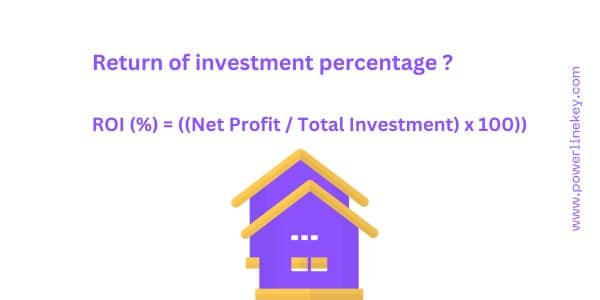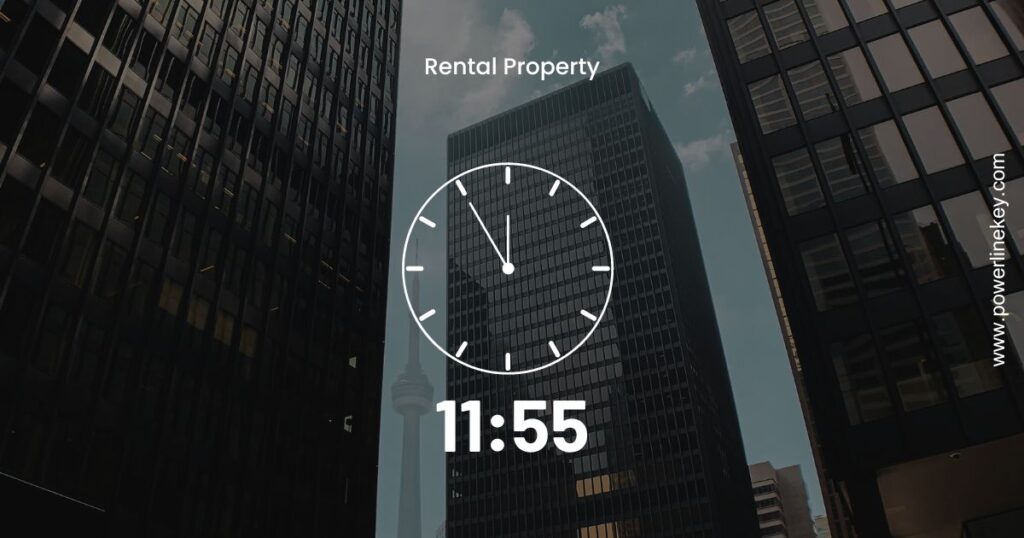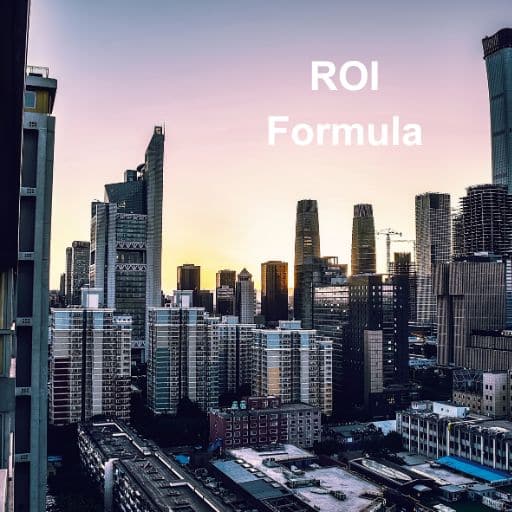How to Access Property Investment Unclaimed Money (Positive ROI)
If you’re eager to discover the secrets of accessing unclaimed money in property investments with a guaranteed positive return on investment (ROI),
You’ve come to the right place. Whether you are a property buyer or seller, calculating investment ROI is the main key. If property is not analysed properly,
Your ROI can be negative! In this guide, PowerlineKey is going to explore the simple real estate property investment steps and software to help you unlock hidden opportunities and maximise your returns.
How to calculate real estate return using simple ROI formula:
Calculating the return on investment (ROI) for real estate is a crucial step in evaluating the profitability of an investment. To determine the ROI for a real estate property, you can use the following formula:

Net Profit: This includes the income generated from the property minus all expenses associated with it. Income sources can include rental income, additional fees, or any other money earned from the property.
Expenses typically encompass property management fees, maintenance costs, property taxes, insurance, and mortgage payments.
Total Investment: This means to the overall cost of acquiring and maintaining the property, From fast to last including time.
How to Calculate ROI on a Rental Property:
Calculating the return on investment (ROI) for a rental property is essential for assessing its profitability. Here’s how to calculate ROI for a rental property using a formula:
ROI (%) = [(Annual Rental Income – Annual Operating Expenses) / Total Cash Invested] x 100

Annual Rental Income: This is the total income you expect to earn from the property over the course of a year. It includes rent from tenants and any additional income sources like parking fees or laundry income, and any annual rent increases.
Annual Operating Expenses: These are the costs associated with running and maintaining the rental property for a year. Operating expenses typically include property management fees, property taxes, insurance, maintenance and repairs, utilities (if the landlord covers them), and any other ongoing costs related to the property.
Total Cash Invested: This encompasses all the money you have invested in the property, including the down payment, closing costs, renovation costs, and any other upfront expenses required to acquire and prepare the property for rental. Get all the figurs and analysis with formulas, Subtract annual operating expenses from annual rental income, and then divide this net income by the total. cash invested.Figurws multiplying by the 100 to get ROI percentage.
A positive ROI indicates that your rental property is generating a profit, while a negative ROI suggests that it’s not covering its costs. Calculating ROI is a valuable tool for evaluating the potential return on your investment and making informed decisions in the world of rental property ownership.
What are some examples of commercial property?
Commercial properties are real estate assets used primarily for business and income-generating purposes. They serve as spaces where businesses operate, providing goods and services to the public. Here are some examples of commercial properties:
Office Buildings: These are spaces specifically designed for professional services, administrative work, and corporate offices. Office buildings can vary in size, from small multi-tenant buildings to large skyscrapers.
Retail Spaces: Commercial properties designed for retail businesses include storefronts, shopping centres, strip malls, and standalone stores. These properties cater to businesses selling goods directly to consumers.
Industrial used Properties:
Example: Manufacturing units,warehouse,supply house,and all types of factories. Hotels and Hospitality: Commercial properties in the hospitality sector include hotels, motels, resorts, and bed-and-breakfast establishments. These properties offer accommodations and services to travellers and tourists.
Restaurants: Properties that house restaurants, cafes, and eateries are considered commercial. These spaces are designed for food service and dining experiences.
Healthcare Facilities: Medical offices, clinics, hospitals, and outpatient centres are commercial properties dedicated to healthcare services.
Multi-Family Housing: Apartment buildings, condominiums, and other multifamily residential complexes can also be considered commercial properties, especially when they are owned and operated as income-generating investments.
Mixed-Use Developments: These are properties that combine multiple commercial uses within a single development. For example, a building may have retail spaces on the ground floor and residential units above.
Specialty Properties: Some commercial properties are designed for specific purposes, such as theatres, gyms, bowling alleys, and event venues. These spaces cater to unique business needs.
Vacant Land: Even undeveloped land in commercial zones can be considered commercial property if it is zoned for future commercial development.
Parking Lots and Garages: Properties designed for parking vehicles, such as surface parking lots or multi-level parking garages, are considered commercial because they generate income from parking fees.
Data Centres: specialised commercial properties designed to house servers and data storage equipment for businesses that require secure and climate-controlled environments for their IT infrastructure.
Commercial properties play a crucial role in the economy, providing spaces for businesses to operate, create jobs, and contribute to local communities. Investors often consider commercial real estate as a source of rental income and potential capital appreciation. Each type of commercial property comes with its own unique characteristics and considerations, making it important for investors to carefully evaluate their investment goals and strategies when entering the commercial real estate market.
Real estate back office management software |
Real estate multi-property brokerage software:
Here is one multi-property investment analysis software that can be easily used for your buy or sell, including brokerage services. With this software till now has analysed 2450000 properties and made 2050000 successful reports, including San Francisco USA. Anyone can try without using a credit card here.
After your satisfactory analysis, you can go for its premium plan, where you get an unlimited property-saving professional dashboard with real estate brokerage features.
Conclusion:
To access the property investment unclaimed money benefits, it is crucial to understand the return on investment (ROI) formula as an existing real estate company and broker follows the formula.
Here is property investment analysis software for buyers and sellers to check out. Additionally, the latest updated ongoing training and tutorials might disclose the real benefits. in your local area. This is the action you might take right away to step into real estate unclaimed money benefits.
Aslo read our related artice:
- Homes for Sale Near Me: Your Realestate Latest Training Guide: Know here
- Keys to a Profitable Real Estate Wholesaler Marketing Strategy: Know here
- Design your small business with global trends for lasting impact: Know here
- Standard Website Design Roadmap- Benefits | Unlocking Success Online: Know here
- Top-Searched Freelance Jobs: Know here







